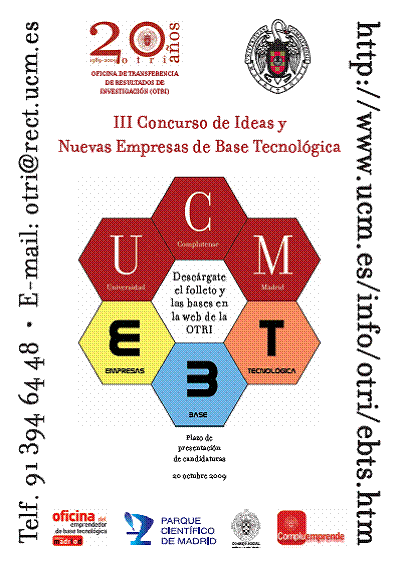UNIT 3 PERIODIC TRENDS AND ORGANIZATION OF THE
1 NASKI TIPS PERIODIC PUBLICATION OF THE NASA LEWIS1 PERIODICO OFICIAL VIERNES 9 DE ABRIL DE 1999
55 CHECK AGAINST DELIVERY PRESENTATION OF THE THIRD PERIODIC
A COLLABORATIVE APPROACH REQUIRED TO END PERIODIC VEGETABLE CONTAMINATION
ADRESÁŘ PŘÍJEMCŮ POVINNÉHO VÝTISKU NEPERIODICKÝCH PUBLIKACÍ (DLE ZÁKONA
ANEXO I – CRONOGRAMA DE IMPLEMENTACIÓN ARCHIVOS PERIODICIDAD INICIO
Unit 3 - Periodic Trends and Organization of the Periodic Table
(Sections: 4.1-4.4, 5.6, 6.1)
I Can Statements:
I. I can identify Mendeleev as the scientist most responsible for organization of the periodic table and
why he receives this credit.
II. I can use the periodic table to identify the group and the period of an element and decide whether it is
a metal, nonmetal, or metalloid. (4.2)
A. I can identify patterns in how elements are grouped. (4.2, 5.5)
1. By increasing atomic number
2. In columns by number of valence
electrons.
3. In rows by energy levels.
4. By s-, p-, d- or f- orbital blocks
B. Identify names for common groups and group notation. (4.2)
1. Alkali Metals
2. Alkaline Earth Metals
3. Halogens
4. Noble Gases
5.Transition Metals
6. Rare Earth Elements
(inner transition metals)
III. I can use electron configurations, and electron shielding to explain periodic trends.
A. Contrast groups (columns) and periods (rows).
1. Identify the number of valence electrons for elements the same group.
2. Identify the number of energy levels for an element in the same period.
3. Identify reactivity patterns between various groups in terms of the ratio of atoms that
form a compound.
B. Use placement in the periodic table to predict and explain trends in:
1. Atomic radii
2. Ionic radii
3. Electronegativity (10.3)
4. First ionization energy
5. State of matter at room
temperature
IV. I can use the octet rule to predict and write the symbols of single ions for the main group
(representative) elements. (6.1)
A. I can define and contrast types of ions based on their charge and whether electrons have been
gained or lost.
1. Cation 2. Anion
B. I can identify the ionic charge for a main group element based on its group number and electron
dot diagram.
Vocabulary:
Alkali Metal
Alkaline Earth Metal
Anion
Atomic Radius
Cation
Chemical Reactivity
Effective Nuclear Charge
Electronegativity
Electron Dot Diagram
Electron Shielding
Energy Level
Halogen
Ion
Ionic Radius
Ionization Energy
Representative Elements
Mendeleev
Metal
Metalloid
Noble Gas
Nonmetal
Octet Rule
Orbital blocks (s, p, d, f)
Periodic Properties
Periodic Trend
Periodicity
Rare Earth Elements
Representative Elements
Transition Metal
Valence Electron
Achievement Scale:
|
Goal |
C Level |
B Level |
A Level |
|
Groups and Periods |
Can identify Mendeleev as the person given credit for organizing the periodic table Can identify common groups based on placement in the periodic table. Can identify elements as metals, nonmetals, and metalloids. |
Can identify the group or period based on electron configuration. Can compare and contrast properties of various groups. Can explain how the original periodic table and modern periodic table are arranged differently. |
Can explain how Mendeleev used periodicity to predict properties of undiscovered elements.
|
|
Periodic Trends |
Can describe the relative periodic trends for atomic radii, ionic radii, electronegativity, or ionization energy. |
Can compare any two elements in the periodic table based on atomic radii, ionic radii, electronegativity, or ionization energy. |
Can, using electron shielding and valence electrons, can specifically explain why the periodic table has specific trends for atomic radii, ionic radii, electronegativity, or ionization energy. |
|
Valence Electrons |
Can determine the number of valence electrons for any representative element. Can describe a valence electron. |
Can draw electron dot diagrams for any representative element.
|
Can explain which part of an electron configuration pertains to an element’s valence electrons. |
|
Octet Rule and Ions |
Can define the octet rule and use it to predict the ionic charge for each group. |
Can predict the ionic charge on elements based on their electron dot diagrams. |
Can, given only the electron configuration of a neutral element, can predict and explain its ionic charge. |
Sample Questions:
C Level:
In what group is lithium?
Describe the way that atomic radius changes as you go from left to right in the periodic table?
Write an electron dot diagram (Lewis dot diagram) for chlorine.
Which group of the periodic table tends to have elements with an ionic charge of -1?
B Level:
What group contains elements with 7 valence electrons?
Does phosphorus, sulfur, or chlorine have a larger value for electronegativity?
What is the ionic charge of Aluminum?
A Level:
What are three examples of differences between elements in the same period that occur in the
halogens versus the noble gases?
Using electron dot diagrams, explain why the atomic radius of fluorine is smaller than lithium despite
having more protons, neutrons, and electrons.
How can you tell how many valence electrons an element has by simply looking at its electron
configuration?
Use electron dot diagrams and periodic trends (electronegativity, ionization energy, …) to explain
why alkali metals tend to have a +1 ionic charge?
ARKANSAS DIVISION OF MEDICAL SERVICES EARLY AND PERIODIC SCREENING
ASME A171 CATEGORY 1 PERIODIC TESTS CITY OF MADISON
ASSESSMENT OF PERIODIC SAFETY UPDATE REPORTS FOR NATIONALLY AUTHORISED
Tags: organization of, for organization, periodic, trends, organization
- COMUNICADO DE PRENSA MADRID 4 DE MARZO DE 2008
- THE DEVELOPMENT OF METEOROLOGICAL OBSERVATION SYSTEM FOR STABLE PROGRESS
- KAMPLAATS “DE HOGE RIELEN” 1WAAR? DE HOGE RIELEN
- TABELLENVORLAGE ZUR DARSTELLUNG DER QUALITÄTSKONTROLLDATEN AUS MINDESTENS 6 GLEICHALTRIGEN
- DISEÑO Y PRESENTACIÓN DE TRABAJOS E INFORMES CIENTÍFICOS TRASTORNOS
- 052 CFGM ELECTROMECANICA DE MAQUINARIA CURRICULO COMUNITAT VALENCIANA ANEXO
- VALUING GREEN GUIDE GREEN ROOFS WALLS AND FAÇADES A
- JURUSAN TEKNIK INDUSTRI FAKULTAS TEKNOLOGI INDUSTRI UNIVERSITAS KATOLIK PARAHYANGAN
- PEDOMAN PENULISAN USULAN PENELITIAN DAN SKRIPSI TIM PROGRAM STUDI
- BIOGEOCHEMICAL CYCLES WATER NITROGEN AND CARBON A CONDENSATION
- CITY OF COLUMBIA WATER UTILITY ACCOUNT
- SUMARI L’ANIMAL DEL MES EL TITÍ LLEÓ DE
- SYSTEMTRONIC SL DATADOS ÍNDICE ÍNDICE 1 10 INTRODUCCIÓN 2
- DIREZIONE GESTIONE RISORSE E SERVIZI ISTITUZIONALI SETTORE RICERCA RELAZIONI
- BIDDING REQUIREMENTS CONTRACT FORMS & CONDITIONS OF THE CONTRACT
- JOB VACANCY WORLD VISION INTERNATIONAL – VIETNAM (WVV) INVITES
- ASSESSMENT STRATEGY FOR NATIONAL SKILLS ACADEMY FOR FOOD AND
- ‘EL PRESENTE’ LOS REGULARES A ¡LAS QUINCE PRIMAVERAS! CECILIA
- 3 PLEASE KEEP THIS PORTION FOR YOUR RECORDS DISSECTION
- 7 PRITARTA ŠILUTĖS RAJONO SAVIVALDYBĖS TARYBOS 2012 M VASARIO
- PLATFORM RISK ASSESSMENT DRAFT V 01 APRIL 29 2002
- HERALDICKÝ REGISTER JE PRÍSTUPNÝ ONLINE HERALDICKÝ REGISTER SLOVENSKEJ REPUBLIKY
- 5 COMPORTAMIENTO ESTRATÉGICO COOPERATIVO 51 JUEGOS COOPERATIVOS UN JUEGO
- BFA PROFESSOR DUNSI DAI THEATRE 4010 BFA COURSE
- PROJECT CLOSEOUT FORMS CONSENT OF SURETY COMPANY TO FINAL
- MEDALJE GRADA ZAGREBA NA TEMELJU ČLANKA 56 TOČKE 12
- 1 NOMBRE DNI SITUACIÓN LABORAL CENTRO DE TRABAJO CIUDAD
- (“SLUŽBENI GLASNIK BIH BROJ 211) NA OSNOVU ČLANA 13
- PROIECTUL BREXIT AL SOCIETĂȚII CIVILE INFORMAȚII UN GHID CU
- IN THE CIRCUIT COURT OF THE ELEVENTH JUDICIAL CIRCUIT
VEDTÆGTER FOR HANDELSSKOLERNES ENGELSKLÆRERFORENING § 1 FORENINGENS NAVN
POC RECEIVED IN EMBASSY READY TO BE COLLECTED CAN
 KIT RODAMIENTOS EJE BASCULANTE OSSA MAR ESTE
KIT RODAMIENTOS EJE BASCULANTE OSSA MAR ESTEMED 556 VISUAL THINKING HOW TO OBSERVE IN DEPTH
 DOCUMENTO 03 LINEAS BASICAS DE LA PEDAGOGIA MODERNA LA
DOCUMENTO 03 LINEAS BASICAS DE LA PEDAGOGIA MODERNA LA AUTORIZACIÓN AL SERVICIO NAVARRO DE SALUDOSASUNBIDEA PARA LA CONSULTA
AUTORIZACIÓN AL SERVICIO NAVARRO DE SALUDOSASUNBIDEA PARA LA CONSULTAHTTPUSERSATWHUAVFKSZ2EV2ALLAMHAZTARTASESKOLTSEGVETESHELYIONKORMANYZATOKDOC
TELETHON 2006 SU INVITO DI BRUNO CECCARELLI I0YCB E
GTBTNEEC172 PAGE 3 WORLD TRADE ORGANIZATION GTBTNEEC172 20 DECEMBER
253 ASIA PAC J CLIN NUTR 200716 (SUPPL 1)253257
JEDILNIK ( OD 5 DO 9 OKTOBRA 2015) DATUM
UMOWA SPRZEDAŻY SAMOCHODU ZAWARTA W DNIU …………………………… POMIĘDZY ……………………………………………………………………………………………………
HOME LANGUAGE SURVEY (HLS) REGISTRATION CARDS MUST INCLUDE
HERITAGE IRISH DANCE COMPANY TUITION INFORMATION 2014 2015
LAWRENCE COUNTY BOARD OF EDUCATION MONTHLY MEETING 730 PM
 CONVOCATORIA DEL III CONCURSO DE IDEAS Y NUEVAS EMPRESAS
CONVOCATORIA DEL III CONCURSO DE IDEAS Y NUEVAS EMPRESAS CHAPTER 8 RECEIVABLES RECEIVABLES AMOUNTS DUE AND EXPECTED
CHAPTER 8 RECEIVABLES RECEIVABLES AMOUNTS DUE AND EXPECTEDNzqa Unit Standard 25709 Version 2 Page 4 of
DIRECTIONS TO THE 550 BUILDING FROM WASHINGTON DC
3 LISTA DE MATERIALES II AÑO MEDIO 2020 1